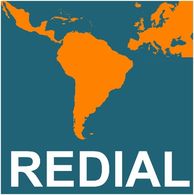The state of transition: A view of life
L'état de transition : un regard sur la vie
Résumé
Joris Lachaise's approach to filmmaking is based on his transition from philosophy to documentary film. The filmmaker and road engineer Jean Rouch helped him imagine this "bridge". In parallel to his work on the anthropology of death and his political questioning of the status of the ethnographic collections of the Musée de l'Homme, he became a cameraman and editor for the cinema. From the taxidermist's workshop to the heterodox rituals of the Neapolitan church, the camera is first and foremost an experimental survey tool for exploring the possible distances between his own gaze and the field of reality. In 2005, he worked alongside Jean-Pierre Krief on the film Saddam Hussein. Chronicle of an announced trial. After months of investigation behind the scenes of the Iraqi Special Tribunal, he gradually unravels the real stakes of this trial. Back in Paris, he lives from reports, produces video pieces based on sound compositions, and collaborates on live performance creations with Gilles Amalvi, Jacques Bonnafé, and Sébastien Roux. In 2009, he co-directed with Thomas Roussillon the feature documentary film Comme un oiseau dans un aquarium. The same year, he participated in the founding of the Marseilles-based association Babel XIII, dedicated to the production and distribution of creative audiovisual works. In 2011, he directed the film Convention : Mur noir / Trous blancs, selected at the États généraux du documentaire de Lussas and awarded documentary of the year at FIFAI (La Réunion). He is director of photography on the latest feature film by sisters Khady and Mariama Sylla. His latest film, Ce qu'il reste de la Folie (What Remains of Madness), made in a psychiatric hospital in Senegal, won the Grand Prix of FID in 2014. Since then, Lachaise has been collaborating, at the University of Turin, with ethno-psychiatrist Roberto Beneduce and psycho-anthopologist Simona Taliani, with a view to making a film within the framework of the Frantz Fanon Center, dedicated to the psychiatric and legal accompaniment of people seeking asylum. In parallel to the making of the feature film Transfariana, shot in Colombia, a new project is underway in Dakar, as well as a documentary opera project, entitled L'Homme d'Harbin, with the composer Bertrand Wolff and the poet Jérôme Game.
Joris Lachaise aborde la pratique cinématographique à partir de son passage d'une formation en philosophie au cinéma documentaire. Le cinéaste et ingénieur des ponts et chaussées Jean Rouch lui aura permis d'imaginer ce « pont ». Parallèlement à ses travaux liés à une anthropologie de la mort et à ses questionnements politiques sur le statut des collections d'ethnographie du Musée de l'Homme, il devient cadreur et monteur pour le cinéma. De l'atelier du taxidermiste aux rituels hétérodoxes de l'église napolitaine, la caméra est d'abord un outil d'arpentage expérimental pour l'exploration des distances possibles entre son propre regard et le champ du réel. En 2005, il travaille aux côtés de Jean-Pierre Krief sur le film Saddam Hussein. Chronique d'un procès annoncé. Après des mois d'enquête dans les coulisses du Tribunal Spécial Irakien il démêle peu à peu les véritables enjeux de ce procès. De retour à Paris, il vit de reportages, réalise des pièces vidéo sur la base de compositions sonores, collabore à des créations de spectacle vivant avec Gilles Amalvi, Jacques Bonnafé, Sébastien Roux. En 2009, il co-réalise avec Thomas Roussillon le long-métrage documentaire Comme un oiseau dans un aquarium. Il participe la même année à la fondation de l'association marseillaise Babel XIII, dédiée à la réalisation et à la diffusion d'oeuvres audiovisuelles de création. En 2011, il réalise le film Convention : Mur noir / Trous blancs, sélectionné aux États généraux du documentaire de Lussas et primé documentaire de l'année au FIFAI (La Réunion). Il est directeur de la photographie sur le dernier long-métrage des soeurs Khady et Mariama Sylla. Son dernier film, Ce qu'il reste de la Folie, réalisé dans un hôpital psychiatrique au Sénégal, a obtenu le Grand prix du FID en 2014. Depuis, Lachaise collabore, à l'université de Turin, avec l'ethno-psychiatre Roberto Beneduce et la psycho-anthopologue Simona Taliani, en vue de réaliser un film dans le cadre du Centre Frantz Fanon, dédié à l'accompagnement psychiatrique et juridique de personnes en demande d'asile. Parallèlement à la réalisation du longmétrage Transfariana, tourné en Colombie,un nouveau projet est en cours à Dakar, ainsi qu'un projet d'opéra documentaire, intitulé L'Homme d'Harbin, avec le compositeur Bertrand Wolff et le poète Jérôme Game.
Fichier principal
 cielam.univ-amu.fr-Létat de transition un regard sur la vie.pdf (2.13 Mo)
Télécharger le fichier
cielam.univ-amu.fr-Létat de transition un regard sur la vie.pdf (2.13 Mo)
Télécharger le fichier
Origine : Fichiers éditeurs autorisés sur une archive ouverte

